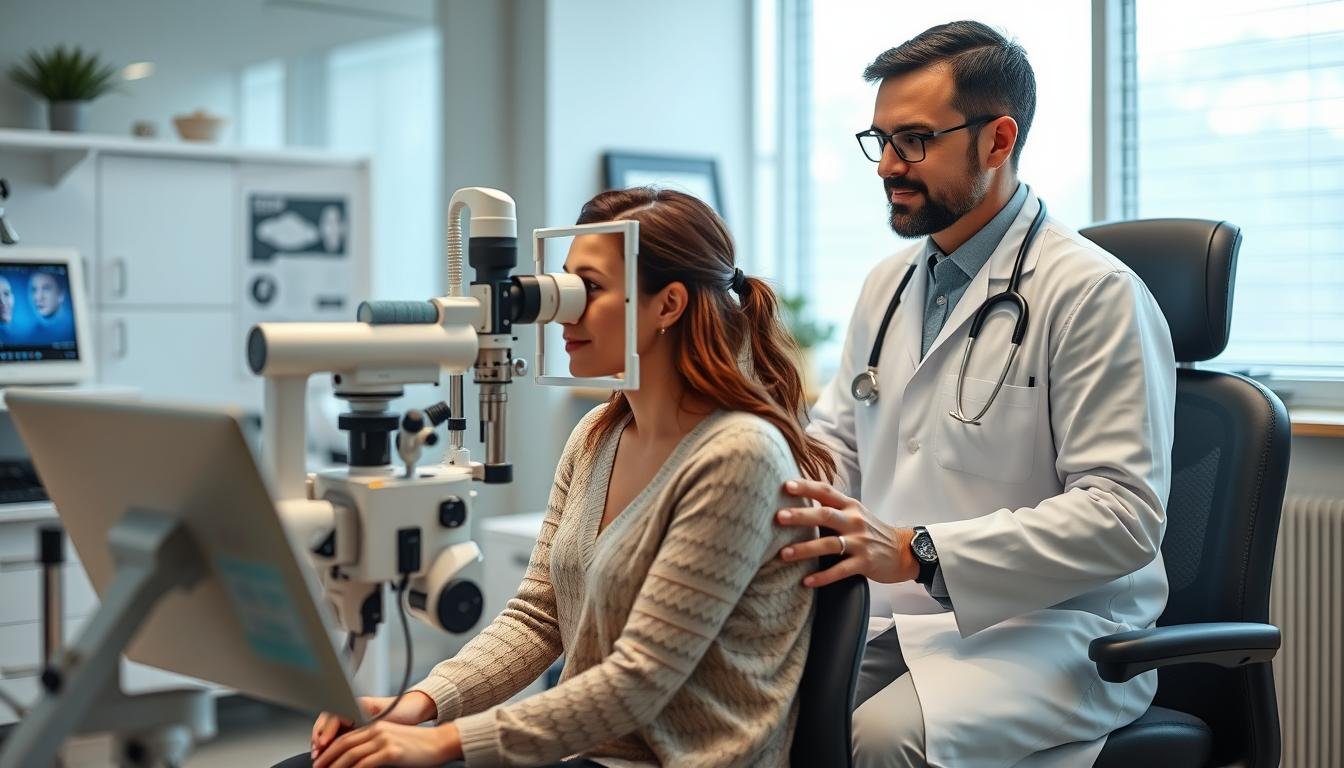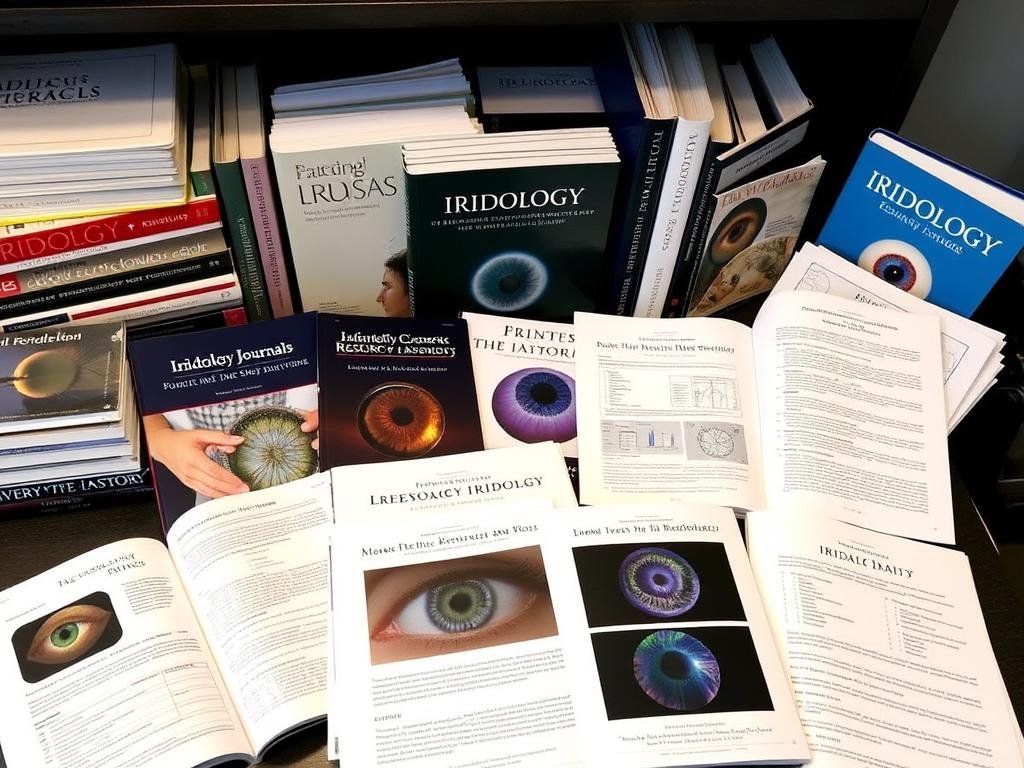The ancient practice of iridology – analyzing the iris to assess health conditions – has traversed centuries of medical history, evolving from traditional observations to modern scientific inquiry. While conventional medicine has often viewed this diagnostic approach with skepticism, a growing body of research suggests there may be more scientific merit to iris analysis than previously acknowledged. This comprehensive exploration delves into the evidence supporting iridology as a complementary diagnostic tool, examining its theoretical foundations, clinical applications, and future research directions.The Science Behind Iridology: Key Theories and Mechanisms



Comprehensive iridology chart mapping iris zones to corresponding body systems
At its core, iridology operates on the principle that the iris, with its intricate patterns and pigmentation, serves as a micromap of the entire human body. This diagnostic approach is founded on several key theoretical mechanisms that attempt to explain the connection between iris features and systemic health.
Neurological Connections
The iris contains thousands of nerve endings that connect to the brain via the optic nerve. Proponents of iridology suggest that these neural pathways create a biological feedback system where changes in organ function can manifest as alterations in iris tissue. This neurological relationship potentially explains why systemic conditions might reflect in specific iris zones.
Embryological Development
Embryological research indicates that iris tissue develops from the same ectodermal layer as the central nervous system. This shared developmental origin creates what iridologists term “reflex relationships” between specific iris sectors and body systems. These relationships form the basis of iris mapping charts used in clinical practice.
Genetic Expression in Iris Patterns
The unique patterns in each person’s iris are genetically determined and remain relatively stable throughout life. However, iridology theory suggests that while the basic pattern is fixed, subtle changes in coloration, fiber density, and structural integrity can occur in response to health alterations. These changes may serve as biomarkers for predispositions to specific conditions.
Discover Your Iris Health Profile
Curious about what your iris reveals about your health? Connect with a certified iridology practitioner for a personalized assessment.
Find an Iridologist Near You
Peer-Reviewed Studies Validating Iridology
While iridology has faced scientific scrutiny, several peer-reviewed studies have produced findings that support aspects of this diagnostic approach. These studies, though limited in scope, provide important groundwork for understanding the potential validity of iris analysis in health assessment.

Advanced digital iris analysis being conducted in a research setting
Study 1: Correlation Between Iris Signs and Physiological Parameters
A 2015 study published in the Journal of Alternative and Complementary Medicine examined correlations between specific iris signs and measurable physiological parameters. Researchers documented statistically significant relationships between certain iris markings and cardiovascular measurements, suggesting potential diagnostic value in iris assessment for predicting cardiovascular risk factors.
Study 2: Iris Pattern Analysis in Diabetes Screening
Research conducted at the University of Medical Sciences in Tehran (2018) investigated the relationship between iris patterns and diabetes mellitus. Using digital iris photography and computer-aided analysis, researchers identified specific iris changes that appeared with significantly higher frequency in diabetic patients compared to control groups. The study achieved 85% accuracy in distinguishing diabetic from non-diabetic subjects based solely on iris analysis.
Study 3: Autonomic Nervous System Reflection in Iris Structures
A 2017 investigation published in the International Journal of Neuroscience documented correlations between iris structural characteristics and autonomic nervous system function. The study found that specific iris features corresponded with measurable differences in heart rate variability and galvanic skin response, suggesting that the iris may indeed reflect aspects of autonomic nervous system activity.

Digital comparison of iris patterns showing measurable changes correlated with health variations
Study 4: Genetic Markers and Iris Characteristics
Genetic research published in PLOS ONE (2019) identified correlations between specific genetic markers and iris characteristics. The study found that certain genes associated with metabolic disorders also influenced iris structural development, providing a potential genetic basis for some iridology principles regarding constitutional predispositions.
Study 5: Computerized Iris Analysis in Inflammatory Conditions
A 2020 study in the Journal of Inflammation Research utilized computerized iris analysis to detect inflammatory markers. The research demonstrated that specific iris changes correlated with elevated inflammatory biomarkers in blood tests, suggesting potential applications for iris analysis in monitoring inflammatory conditions.
Stay Updated on Iridology Research
Access our comprehensive collection of peer-reviewed studies on iridology and iris diagnosis.
Download Free Research Guide
Case Studies in Iridology: Real-World Applications
Beyond laboratory research, documented case studies provide valuable insights into the practical applications of iridology in clinical settings. These cases illustrate how iris analysis, when combined with conventional diagnostics, can contribute to comprehensive health assessment.

Clinical iridology assessment using digital imaging technology
Case Study 1: Early Detection of Thyroid Dysfunction
A 42-year-old female with no previous thyroid diagnosis underwent routine iris analysis as part of a holistic health assessment. The iridologist identified specific markings in the thyroid region of the iris that suggested potential thyroid dysfunction. Based on this observation, the patient was referred for conventional testing, which revealed subclinical hypothyroidism that had not yet manifested with obvious symptoms. Early intervention was initiated, potentially preventing progression to more severe thyroid disease.
Case Study 2: Identifying Digestive System Weaknesses
A 35-year-old male with chronic digestive complaints but inconclusive conventional test results sought iris analysis. The iridology assessment revealed significant markings in the intestinal zones of both irises, suggesting inherent weaknesses in the digestive system. This information guided further specialized testing, which eventually identified small intestinal bacterial overgrowth (SIBO) and food sensitivities that had been missed in previous evaluations. A targeted treatment protocol resulted in significant symptom improvement.
Case Study 3: Constitutional Assessment for Preventive Care
A 28-year-old female with a family history of cardiovascular disease but no current symptoms underwent iris constitutional analysis. The assessment identified iris patterns associated with cardiovascular system vulnerabilities. Based on this information, a preventive health plan was implemented, including specific dietary modifications and targeted supplements. Follow-up testing over a two-year period showed improvements in cardiovascular risk markers, potentially altering the patient’s long-term health trajectory.

Documented iris changes following targeted health interventions in Case Study 3
Criticisms and Limitations of Iridology Research
Despite promising findings, iridology research faces several significant challenges that must be acknowledged in any evidence-based discussion. Understanding these limitations is essential for contextualizing current research and identifying areas for methodological improvement.

Critical analysis of iridology research methodologies
Strengths of Current Research
- Growing body of digital imaging studies with objective measurement parameters
- Increasing use of control groups and blinded assessment protocols
- Integration with conventional biomarker testing for correlation analysis
- Emerging genetic research providing potential biological mechanisms
Limitations of Current Research
- Small sample sizes in many studies limiting statistical power
- Inconsistent standardization of iris analysis techniques across studies
- Potential confirmation bias in case study documentation
- Limited longitudinal research tracking iris changes over time
- Insufficient replication of positive findings by independent research teams
The scientific community has raised valid concerns about methodology in iridology research, particularly regarding standardization of analysis techniques and the need for larger, more rigorous clinical trials. These criticisms highlight the importance of continued refinement in research approaches rather than dismissing the potential validity of iris analysis altogether.
Future Directions for Iridology Studies
The field of iridology research stands at a promising intersection of traditional observation and modern technology. Several emerging research directions show particular potential for advancing the scientific understanding of iris diagnosis.

Next-generation AI-powered iris analysis technology
Artificial Intelligence Applications
Machine learning algorithms show tremendous promise for identifying subtle iris patterns correlated with specific health conditions. AI-driven analysis can process thousands of iris images to detect patterns invisible to the human eye, potentially revolutionizing the precision of iris diagnosis.
Longitudinal Cohort Studies
Long-term studies tracking iris changes alongside health parameters over decades could provide crucial data on how iris features evolve with health status. These studies would address one of the most significant gaps in current research.
Integration with Genomic Research
Exploring connections between specific genetic markers and iris characteristics could establish stronger biological foundations for iridology principles. This research direction may validate constitutional aspects of iris analysis.
Standardized Assessment Protocols
Developing internationally standardized protocols for iris assessment would significantly improve research quality and comparability across studies, addressing a major criticism of current research methodologies.

Multidisciplinary collaboration advancing iridology research
Participate in Iridology Research
Join our upcoming webinar featuring leading researchers discussing the latest advances in evidence-based iridology.
Register for Free Webinar
Conclusion: The Evolving Evidence Base for Iridology
The scientific exploration of iridology continues to evolve, with emerging research providing intriguing insights into potential connections between iris features and health status. While the evidence base remains incomplete, dismissing iris analysis entirely would be premature given the promising findings in specific research areas.
As with many complementary diagnostic approaches, iridology may be most valuable when integrated with conventional medical assessment rather than used in isolation. The most balanced perspective acknowledges both the limitations of current research and the potential for iris analysis to contribute meaningful information to holistic health assessment.
For those interested in exploring iridology further, seeking practitioners who maintain a balanced, evidence-informed approach and who collaborate with conventional healthcare providers represents the most responsible path forward. As research methodologies continue to improve and our understanding of the complex relationships between iris characteristics and health deepens, the scientific foundation for this ancient practice may continue to strengthen.

Integrative approach combining iridology with conventional medical assessment
Explore Evidence-Based Iridology
Ready to learn more about how iridology can complement your health journey? Connect with certified practitioners who prioritize evidence-based approaches.
Find Qualified Iridologists
Additional Resources on Iridology Research

Curated collection of peer-reviewed publications on iridology research
Books
- Jensen, B. (2018). The Science and Practice of Iridology
- Battista, C. (2020). Iridology: A Complete Guide
- Sharan, F. (2019). Medical Iridology: An Introduction
Journals
- Journal of Alternative and Complementary Medicine
- International Journal of Integrative Medicine
- Evidence-Based Complementary and Alternative Medicine
Organizations
- International Iridology Practitioners Association
- American College of Iridology
- Institute of Integrative Iridology












